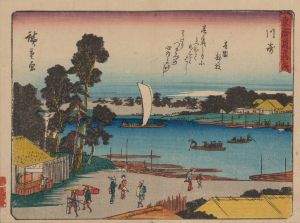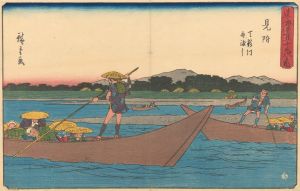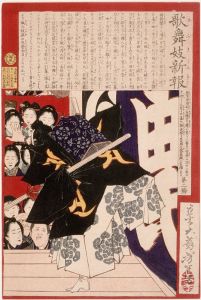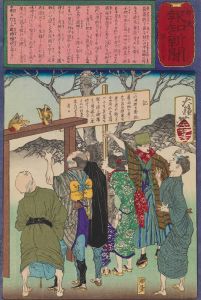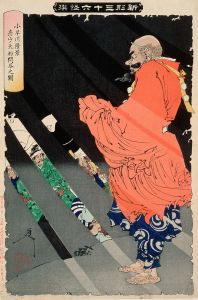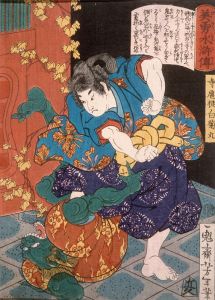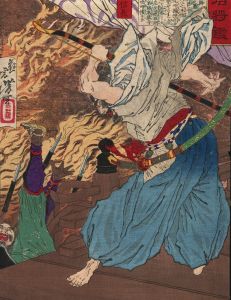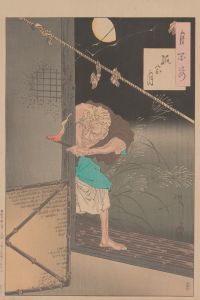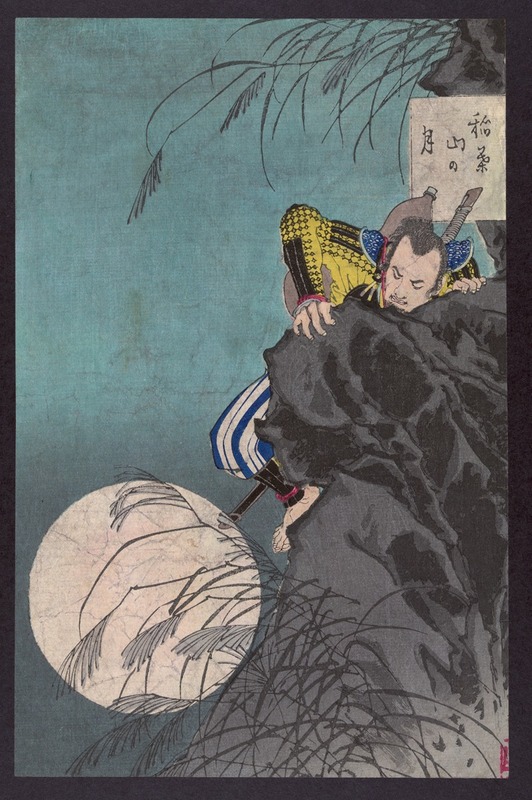
Inabayama no tsuki
A hand-painted replica of Tsukioka Yoshitoshi’s masterpiece Inabayama no tsuki, meticulously crafted by professional artists to capture the true essence of the original. Each piece is created with museum-quality canvas and rare mineral pigments, carefully painted by experienced artists with delicate brushstrokes and rich, layered colors to perfectly recreate the texture of the original artwork. Unlike machine-printed reproductions, this hand-painted version brings the painting to life, infused with the artist’s emotions and skill in every stroke. Whether for personal collection or home decoration, it instantly elevates the artistic atmosphere of any space.
Tsukioka Yoshitoshi (1839–1892) was a renowned Japanese artist known for his woodblock prints and paintings, particularly during the late Edo and early Meiji periods. He is often celebrated for his innovative approach to traditional ukiyo-e art, bringing a fresh perspective and emotional depth to his works. One of his notable series is the "One Hundred Aspects of the Moon" (Tsuki hyakushi), which includes the piece "Inabayama no tsuki" (The Moon at Inabayama).
"Inabayama no tsuki" is part of Yoshitoshi's "One Hundred Aspects of the Moon," a series that explores various themes related to the moon, drawing inspiration from Japanese history, folklore, literature, and theater. This series was produced between 1885 and 1892, during a time when Japan was undergoing significant cultural and social changes due to the influence of Westernization. Yoshitoshi's work during this period is noted for its blend of traditional Japanese aesthetics with modern sensibilities.
The print "Inabayama no tsuki" depicts a scene associated with Inabayama Castle, which is historically significant as the site of a famous battle and the eventual rise of the powerful daimyo Oda Nobunaga. Inabayama Castle, later renamed Gifu Castle, was a strategic stronghold during the Sengoku period, a time of social upheaval and military conflict in Japan. The castle's capture by Nobunaga in 1567 marked a turning point in his campaign to unify Japan.
Yoshitoshi's depiction in "Inabayama no tsuki" captures the serene and contemplative atmosphere often associated with moonlit scenes in Japanese art. The moon serves as a symbol of beauty, mystery, and the passage of time, themes that resonate throughout Yoshitoshi's series. His use of color, composition, and intricate detailing in the print reflects his mastery of the woodblock printing technique and his ability to convey emotion and narrative through visual art.
Yoshitoshi's work, including "Inabayama no tsuki," is characterized by its dramatic and expressive style. He often portrayed historical and legendary figures with a sense of realism and psychological depth, setting his work apart from many of his contemporaries. His prints are also noted for their dynamic use of space and innovative compositions, which helped to revitalize the ukiyo-e tradition during a period of decline.
The "One Hundred Aspects of the Moon" series, with its diverse range of subjects and themes, showcases Yoshitoshi's versatility as an artist and his deep appreciation for Japanese culture and history. "Inabayama no tsuki," like many of the prints in the series, invites viewers to reflect on the interplay between nature, history, and human experience, all under the unifying presence of the moon.
Yoshitoshi's legacy as an artist endures, with his works continuing to be celebrated for their artistic merit and cultural significance. His ability to capture the essence of his subjects and evoke a sense of timelessness in his prints has earned him a lasting place in the history of Japanese art.





